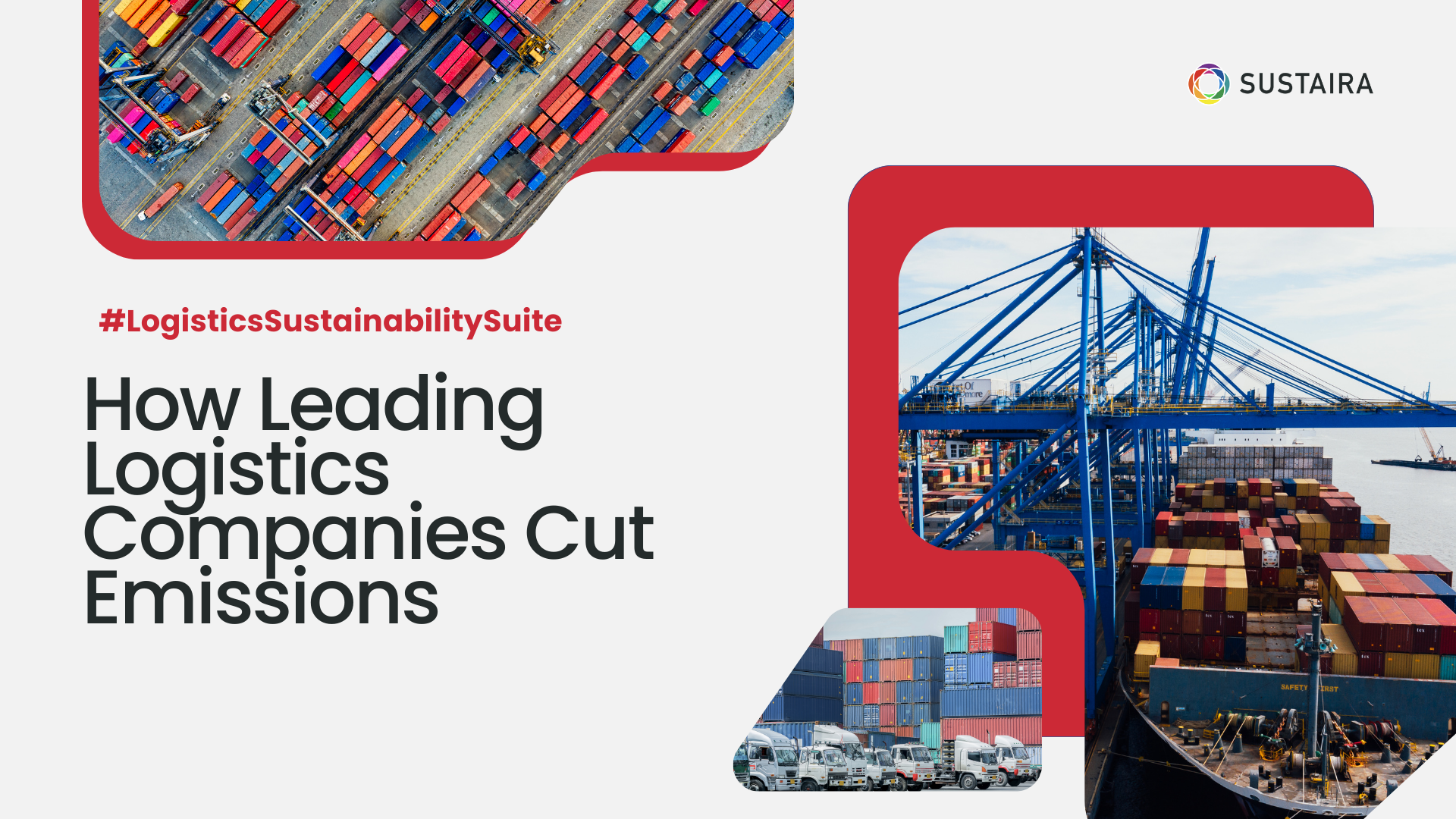How Leading Logistics Companies Cut Emissions: A Roadmap to Sustainable Supply Chains
In an era where climate consciousness is reshaping industries, logistics companies are stepping up to the challenge of reducing their environmental impact. From smarter routing to sustainable fuels, the sector is undergoing a green transformation that’s not only good for the planet, but also for business.
Smarter Movement
One of the most effective ways to cut emissions is through route optimization. By leveraging advanced algorithms and real-time traffic data, companies can minimize fuel consumption, reduce mileage, and improve delivery reliability. These improvements not only lower carbon output but also enhance customer satisfaction and operational efficiency.
Fleet upgrades are also central to this shift. Logistics firms are investing in fuel-efficient vehicles, including hybrids and electric trucks, and retrofitting older models with cleaner technologies. Meanwhile, alternative fuels, such as biofuels from organic waste, hydrogen-powered trucks, and sustainable aviation fuel, are helping companies reduce reliance on fossil fuels and future-proof their operations.
Scope 2 and Scope 3 Accountability
Warehouses are evolving into sustainability hubs through decreasing scope 2 emissions. Facilities now feature LED lighting, smart HVAC systems, solar panels, and energy-efficient insulation. Automated equipment and biodegradable packaging materials further contribute to lower operational costs and improved working conditions.
Beyond their own walls, logistics companies are tackling Scope 3 emissions through supplier audits, sustainability scorecards, and collaborative carbon reduction goals. Transparent reporting across the supply chain is becoming the norm, helping companies hold themselves and their partners accountable.
Increased Innovation
Ocean freight, traditionally one of the most carbon-intensive parts of the supply chain, is undergoing a green revolution. Innovations like wind-assisted propulsion systems, slow steaming, and low-sulfur marine fuels are making a measurable impact. Even hull designs are being reimagined to improve hydrodynamic efficiency, reducing drag and fuel consumption.
In urban environments, last-mile delivery is getting a high-tech makeover. Drones and autonomous vehicles are reducing traffic congestion, cutting fuel use, and improving delivery speed, especially in densely populated areas where traditional delivery methods struggle.
Technology Integration
Technology plays a pivotal role in this transformation. Artificial intelligence and the Internet of Things (IoT) help identify efficient routes, predict vehicle maintenance needs, and monitor fuel consumption in real time. Data analytics empower companies to spot inefficiencies, forecast demand, and benchmark performance against sustainability KPIs.
Increasingly, these efforts are supported by Sustainability platforms like Sustaira. With customizable dashboards and seamless integration, Sustaira helps logistics firms unify their sustainability data, track progress, and communicate their environmental impact with clarity and confidence. It’s becoming a vital tool for companies serious about aligning environmental goals with business strategy.
Connecting Strategy to Action
The logistics sector is making impressive strides in cutting emissions through smarter routing, fleet upgrades, and Scope 3 accountability. Yet these efforts generate enormous amounts of data that can be difficult to manage and translate into measurable progress.
The Logistics Sustainability Suite provides a way forward. By consolidating emissions data across fleets, facilities, and suppliers, it enables logistics companies to:
Track Scope 1, 2, and 3 emissions in one place.
Benchmark performance against sustainability KPIs.
Model scenarios such as fleet electrification or alternative fuel adoption.
Engage suppliers with transparent reporting and shared decarbonization goals.
This suite turns sustainability from a patchwork of initiatives into a cohesive roadmap for supply chain transformation. It helps logistics leaders move beyond fragmented efforts toward actionable insights, accountability, and long‑term resilience.
Join the conversation
Tackle Scope 3 Emissions & Boost Supply Chain Sustainability
Join our webinar on Solving Scope 3 Emissions and Supply Chain Visibility Challenges with Sustaira Logistics Sustainability Suite and discover how our suite helps your organization optimize the supply chain and accelerate sustainability goals.



